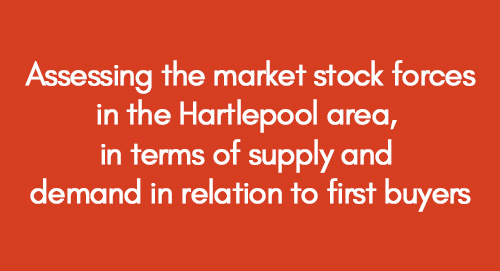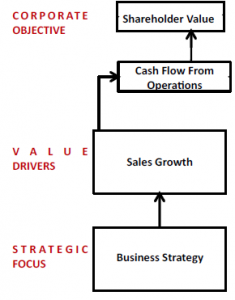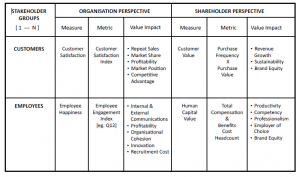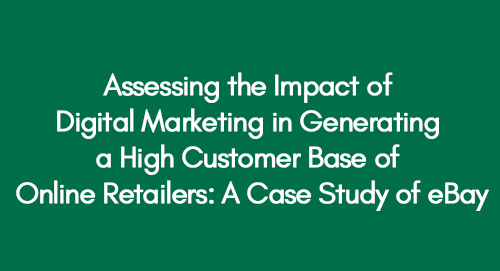
Assessing the market stock forces in the Hartlepool area, in terms of supply and demand in relation to first buyers
January 13, 2021
Managing Resources in Hospitality and Tourism
January 14, 2021PART 1 - THE COMPANY REPORT
Introduction
This report is based on Sainsbury's Plc UK and it aims to critically review of the present situational of value management in the company and hence the current inadequacies in the strategies and operations by evaluating the shareholder value creation and free cash flow of the company. Moreover, feasible and desirable changes are proposed to the existing value management strategies and operations, by which value-based organisational development will be achieved which will result in value creation for the shareholders and the key stakeholder groups of the company. A system for value measurement is to be proposed to forecast value addition for the shareholders. Furthermore, the potential risk of not accepting the proposed changes in the existing value management strategies are also highlighted together with a statement of the consequential implications for organisational stakeholders.
- A critical review of the present situational of value management in Sainsbury's UK, aiming to identify the current inadequacies in the strategies and operations to be addressed in future for value creation.
According to contemporary literature, value management is a concern more with the measurement of value creation in comparison with the management activities that leads towards value creation. In view of this concept for critically reviewing the present situational of value management in Sainsbury's UK, it is necessary to measure the shareholder’s value creation. In the literature, the shareholder’s value is referred to as return on investments which shareholders have made in a company. Different measures are found in the literature which deals with the measurement of shareholder’s value. Traditionally the accounting-based measures were used by companies to evaluate the value creation of a company, such as sales revenue, net profit, Earnings Before Interest and Tax (EBIT), Earnings per Share (EPS), Return on Invested Capital (ROIC), Return on Assets (ROA), and Return on Equity (ROE). In this regards the following table provides the key financial indicators and financial ratios of Sainsbury's UK for the period 2015 and 2016, for the value measurement of the company.
Table 1.1
|
Sainsbury's UK |
2016 |
2015 |
|
Sales Revenue (GBP in Millions) |
23,506 |
23,775 |
|
Operating Revenue or EBIT (GBP in Millions) |
707 |
81 |
|
Net Profit (GBP in Millions) |
471 |
-166 |
|
Earnings per share (in GBP) |
0.23 |
-0.08 |
|
Return on Invested Capital (%) |
6.53 |
-1 |
|
Return on Assets (%) |
2.81 |
-1 |
|
Return on Equity (%) |
7.91 |
-2.88 |
(Morningstar Inc, 2016)
The analysis of the key financial indicators and financial ratios of Sainsbury's UK based on accounting-based measures indicates that the sales revenue had slightly declined in 2016, while the EBIT, net profit, and EPS had increased in 2016 in comparison with 2015. This increased EBIT and net profit in 2016 indicates value creation as per the accounting-based measures. The analysis of the financial ratios of 2015 and 2016 in the above table indicated that ROIC, ROA, and ROE of the company had improved in 2016, also indicating value creation for the shareholder. Therefore based on accounting-based measures Sainsbury's UK was able to create value for its shareholders in 2016, and hence depicting good present situational of value management. However, this finding may not be true based on Economic based measures such as Economic Value Addition (EVA) and Market Value Addition (MVA). (Rappaport, 2006).
It is argued that the accounting-based measures do not account for the cost of capital and hence fails in accurately measuring value creation, and so it does not depict the true picture of the present situational of value management of Sainsbury's PLC. As per Pablo Fernandez (2002) the value is created when the market value of a share is more than its book value. However, the value is destroyed when the market value of a share is less than its book value.
Because of this, the value creation by Sainsbury's PLC is again evaluated by comparing the market value of a share with the book value of a share as suggested by Pablo Fernandez (2002). The following table depicts the market value of Sainsbury's share, the book value of Sainsbury's share for the year 2015 and 2016.
Table 1.2
|
Sainsbury's UK |
2016 |
2015 |
|
Book Value per share (GBP) |
3.02 |
2.78 |
|
Market value per share (GBP) |
2.50 |
2.79 |
|
Value Creation or Value Destruction (GBP) |
-0.52 |
0.01 |
(Morningstar Inc, 2016)
In 2015 the book value per share was GBP 2.78, while the market value per share was GBP 2.79. So according to Pablo Fernandez (2002), the value was created by subtracting book value from the market value per share, however, the created value was merely GBP 0.01. However in 2016, the book value per share was GBP 3.02, while the market value per share was GBP 2.50, and as the book value was less than the market value of the share, therefore, the value was destroyed rather than created as indicated by the negative value of GBP -0.52 as shown in the above table. The present situational of value management in Sainsbury's UK was found to be poor based on the comparison of market value and book value.
This highlights that even though the company’s operating profits (EBIT), net profits and investment ratios had shown good performance, however as the market value per share was lower than the book value per share, therefore, the company’s strategy does not indicate towards value creation. Rather the strategy had resulted in the destruction of shareholder’s value as it had failed to create economic value addition in terms of higher market value than the book value. (Bowman & Ambrosini, 2010)
The poor value management in Sainsbury's was due to inadequacies in the strategies as the company had adopted a price strategy where it was matching the prices of branded products with the prices offered by the competitors, to be able to remain competitive in the highly competitive retail industry of UK (Butler, 2016a). The ‘Brand Price Match Strategy’ had enabled the company to increase its profits in the short-run but had failed to increase its market value. Therefore this strategy is the key factor contributed towards Sainsbury’s value destruction, therefore this current inadequacies in the strategies of Sainsbury's are necessary to be addressed if the company wants to create value in future.
- Realistic and required change, and suggested value measurement solution aiming to achieve value-based organisational development and value creation for shareholders and stakeholders of the company
As identified in the previous section of this report that poor value management in Sainsbury's was due to inadequacies in its ‘Brand Price Match Strategy’, due to which the company was focusing on reducing its prices. Remedying the declining sales performance was the main challenge faced by the company. It is because due to declining sales revenue and profitability the company was unable to create value for its shareholders and stakeholders. Therefore for realising incremental value addition in terms of value creation it is necessary to increase sales revenue by bringing strategic intervention focused on realistic change. (Anderson, Narus, & Wouter, 2006)
To be able to suggest feasible and desirable changes to existing value management strategies and operations of Sainsbury's Plc it is necessary to identify the critical variables which can improve performance outcomes and drive shareholder’s value in the organization. Knowing how the value drivers can impact the value creation is vital. The value drivers must be able to generate positive future cash flows which after covering all the cost (including the cost of capital), result in value creation. In view of this, the following model is proposed which suggests how the strategic decision, stimulating value drivers can lead towards incremental value creation. (Johansen & Nielsen, 2011)

Figure 1
Based on the above model three components of value management are identified namely;
- Strategic financial objective
- Key-value driver(s)
- Strategic action needed(Fernandez, 2002)
In contemporary literature, the Free Cash Flows (FCF) is considered as an indicator of long-term value creation. The value creation is more concerned with earning long-term free cash flows where the returns exceed the cost of capital. In this regards the cash flows and cost of capital are two important components on which value creation depends and they are related to the strategic financial objective. (Mauboussin, 2011)
For value creation in Sainsbury, the suggested strategic financial objectives are;
- To increase sales revenue by 5% each year for the next 3 years.
- To reduce the cost of capital by 10% each year for the next 3 years.
The respective value drivers for the above objectives are;
- Net revenue growth and net operating profits growth are identified as key value drivers for achieving a 5% annual increase in sales revenue for the next 3 years.
- Reduction in the cost of equity and cost of debt is identified as key value drivers for achieving 10% annual decrease in the cost of capital for the next 3 years.
In this regards the strategic action needed to achieve increased sales revenue is by adopting ‘Lower Regular Prices Strategy’. Under this strategy, the company can cut down the prices of its daily basics products such as bakery items and cleaning products (Butler, 2016b). While the strategic action needed to achieve a decreased cost of capital is by reviewing; the debt profile, and the cost structure of the company. By making changes in the debt profile and the cost structure of the company it is possible to reduce the cost of debt and cost of equity, and hence reduction in the capital cost.
Alfred Rappaport (1997) had suggested a value measurement model, Shareholder Value Added (SVA) which is proposed in this report to measure shareholder’s value addition for Sainsbury’s. This value measurement model is based on forecasting the future cash flows over a certain period of time-based on value drivers. The forecasted future cash flows are discounted back to the present value by using the cost of capital. In the suggested model the Weighed Average Cost of Capital (WACC) is the cost of capital. The present value of all the estimated future cash flows are added together indicates the creation of value. The cumulative present value when divided by the total number of share, it gives the value per share. If the forecasted value is greater than the historic value of the previous period, shareholder’s value is created.
The following table 2.1 indicates forecasted future cash flow analysis based on 5% annual increase in sales revenue and operating profit, and table 2.2 indicates the calculation of WACC how 10% annual reduction in the cost of capital is achieved by decreasing WACC. The WACC was also used to discount the future cash flows to their present value.
|
Table 2.1 |
Values in Millions GBP |
|||
|
Future Cash Flow Analysis |
Forecasted |
Forecasted |
Forecasted |
Present |
|
2019 |
2018 |
2017 |
2016 |
|
|
Sales Revenue (Increase in Sales by 5%) |
27,211 |
25,915 |
24,681 |
23,506 |
|
Cost of revenue (Increase in Cost of revenue by 5%) |
25,526 |
24,310 |
23,153 |
22,050 |
|
Gross Profit |
1,686 |
1,605 |
1,529 |
1,456 |
|
Operating expenses (Increase in Operating expenses by 5%) |
984 |
937 |
893 |
850 |
|
EBIT or Operating Profit |
702 |
668 |
636 |
606 |
|
Less: Tax (14.05%) |
99 |
94 |
89 |
77 |
|
Net profit after Tax |
603 |
574 |
547 |
529 |
|
Add: Depreciation (Average Increase in Depreciation 5.6%) |
6,471 |
6,128 |
5,803 |
5,495 |
|
Gross Cash-Flow |
7,074 |
6,702 |
6,350 |
6,024 |
|
Less: Change in working capital (-8.9%) |
-1724 |
-1892 |
-2077 |
-2280 |
|
Less: Change in capital expenditure (CAPEX) (12%) |
7,997 |
7,089 |
6,284 |
5,611 |
|
Free Cash Flow |
801 |
1,505 |
2,142 |
2,693 |
|
Present Value (PV) of Future Cash Flows |
689 |
1,361 |
2,037 |
|
|
Terminal Value |
|
4,087 |
||
|
Value of Sainsbury's Plc UK After 3 years |
|
6,780 |
||
Table 2.2
|
Weighted Average Cost of Capital (WACC) Calculation |
|
|
Dividend per share (2015) |
0.17 |
|
Dividend per share (2016) |
0.12 |
|
Market value of share |
2.50 |
|
Growth rate of dividend (Negative Growth Rate) |
0.00 |
|
Interest on debt |
120.00 |
|
Re (Cost of Equity) |
0.05 |
|
Rd (Cost of debt) |
0.06 |
|
E |
6,365 |
|
D (Debt) |
2,053 |
|
V |
8,418 |
|
E/V |
0.76 |
|
D/V |
0.24 |
|
Tc |
0.14 |
|
WACC 2016 |
0.049 |
|
WACC 2017 (10% annual reduction) |
0.044 |
|
WACC 2018 (10% annual reduction) |
0.037 |
|
WACC 2019 (10% annual reduction) |
0.032 |
The estimated total market value per share was determined by dividing the cumulative present value of future cash flows (GBP 6,864 Million) by the total number of shares (2,180 Million) as indicated in below table 2.3.
Table 2.3
|
Valuation Model |
No of shares (000) |
Value (000) |
Market Value Per Share (GBP) in 2019 |
|
Discounted Cash Flows |
2,108 |
6,864 |
3.26 |
The following table highlights that the forecasted market value per share of (GBP 3.26) was greater than the present market value (GBP 2.50), therefore shareholder’s value was created (GBP 0.76).
Table 2.4
|
Sainsbury's Plc UK |
GBP |
|
Value (Forecasted) |
3.26 |
|
Market Value (2016) |
2.50 |
|
Created Value |
0.76 |
This highlighted that for value management it is necessary that the management decisions are focused towards value creation at the strategic and operational level. The proposed value management solution creates shareholder value by developing value for key stakeholder groups such as customers. The following model highlights how the proposed value measurement solution leading towards value-based organisational development results which can be communicated to the key stakeholder groups.

Figure 2 (LSC, 2016)
The above figure highlights how the key stakeholder groups’ perspective contributes towards value creation for the organisation and shareholder’s perspective. This model indicates that the shareholders remain the ultimate beneficiary as the interests of other groups are reconciled with the shareholder’s perspective.
- The potential risk for the organisation and consequential implications for its stakeholders if the proposed value measurement solution discussed in the previous section of this report is not accepted
The proposed value measurement solution was based on strategic and operational management decision focusing on value creation based on economic value creation as it considers the cash flows and cost of capital. If the organisation uses the accounting-based measures of value creation rather than using the proposed economics-based value creation then it may be able to identify correctly if it is creating any value. It is because the accounting measure of value creation such as EBIT, EPS, ROIC, ROI etc are not related to free cash flow generation. There could be a possibility that an organisation is generating positive EBIT, EPS, ROIC, or ROI but at the same time have negative cash flows. Therefore in this situation, the company with positive EBIT, EPS, ROIC, or ROI would not be creating value for the shareholders, rather it would be destructing the shareholder’s value. So failing to accept the proposal would render the company incapable of correctly measuring the value creation.
Moreover in the proposed value measurement solution was based on the three components of value management; Strategic financial objective, Key-value driver(s), and Strategic action needed to develop value. In this way, the proposed solution the incremental value addition was in response to the strategic and operational level changes. The suggested solution was based on the strategic financial objective which is measurable and time-bound.
Moreover, the strategic financial objective had two components cash flow and cost of capital and both of these components were included in the proposed value measurement solution. The strategic financial objective was; to increase sales revenue by 5% each year for the next 3 years and, to reduce the cost of capital by 10% each year for the next 3 years. By knowing the respective value drivers and strategic action needed for achieving the strategic financial objective it becomes easy for the managers to know what is to be done to achieve the strategic financial objective. In this regards the proposed solution gives managers a roadmap which they can follow to achieve the objective while monitoring and controlling their operations. Therefore not accepting the proposal may result in lack of direction and alignment between the strategic objectives, and the operational activities.
As per the proposal, the company would be able to have forecasted market value per share of (GBP 3.26) in the next three years, however, its present market value is (GBP 2.50), therefore it would be able to create shareholder’s value of (GBP 0.76). In this regard, failing to accept the proposal would prevent the organisation shareholder’s value creation of GBP 0.76.
Besides, in given circumstances, if the company does not accept the proposal there is a risk that the company cash flows would decrease, while its cost of capital will increase in the subsequent years. Consequently, the future market values of the share will decrease, leading to value destruction. The destruction of value would be against the key stakeholder groups’ perspective, organisation perspective as well as the shareholder’s perspective. Therefore by rejecting the proposed solution would amount to disregarding the perspectives of key stakeholder groups.
The proposed value management strategic change can enable the company to create value for the shareholders. In view of this, if this proposal is ignored by the board and the proposed changes in its strategy are not implemented then the company would not only miss the opportunity to create value for this shareholders and stakeholders. It would also ignore the remedy of the present declining sales revenue and profitability. Besides, the competitors will get the opportunity to bring the same changes and get benefited by value creation.
PART 2 EVIDENCE REVIEW
- Critical literature review related with the value creation theme which was covered in the company report and contemporary organisational evidence supporting the proposed value creation perspective
The main theme which was covered in the company report was related to the shareholder’s value creation and measurement. Based on the literature two main categories of measures of shareholder’s value creation were found, namely; Accounting based Measures, and Economic Value-based Measures. These two value measures are critical review as follows.
- Accounting based Measures
Traditional performance measures are derived from a range of financial ratios such as Earning Per Share (EPS), Book Value (BV), Return on Equity (ROE), Return on Assets (ROA), and Return on Investment Capital (ROIC). Hence, all of them are considered to be an accounting member. These financial ratios are widely spread and use in many organisations. Thus, through calculation measures, a firm can easily be derived where it stands in the market. Nevertheless, when it comes to value creation there were some lacking in obtaining an effective result from the three fundamental factors in term of amount, timing and risk from the future generated cash flow of the organisation (Jalaja, 2008)
The accounting measures usually computes of financial ratios and in this case, ratios such as ROA and ROIC are being used. However, these ratios have less impact over earnings as they work more with the capital employed. Consequently, these ratios are used for a period usually not more than a one-year basis but tend to ignore the risk associated with the cost of capital. Therefore this leads to wrong indication and interpretation upon the firm’s ability to dictate its market value. Managers can play a big role in influencing the accounting model simply by making a wise decision in choosing their accounting methods. Thereafter, the result of this choice will have an immediate impact on their earnings. Furthermore, this concept by the managers is called Earning management which can deliberately distort the accounting data and information, such as net income. This in turn can reduce the efficiency of the financial statement in terms of fairness, the accuracy of information, reliability and comparability. Moreover, this process will try to mislead investors, judgments and decision making resulting in poor allocation of resources. (Mauboussin, 2011)
Besides what can be exploited from accounting-based measures is that it is user friendly, however in terms of effectiveness; it fails to provide an accurate measure value. Nonetheless, it also limits its strategic decision-making process. Sometimes, these measures are also being modified and hence, the virtual absence of analysis leads to bad performance evaluation and compensation contracts. Henceforth, many empirical types of research also came forward with the evidence that companies using ‘market’ values tend to reply on long term generated cash-flows. Thus, the message that is being conveyed here is that it is preferable to use Value-Based Measures rather than accounting ones. (Stout, 2012)
1.2 Economic Value-based Measures
Economic Value Added
The concept of Economic Value Added (EVA), also known as economic profit is defined under the corporate performance measurement (Stewart, 1991). It was being implemented by the General Motors Corporation in the late 1920s and also a founder of shareholders value. However, in the 1980s it was being redefined to take over the traditional measure of value creation. The concept of EVA was developed in a very systematic way to improve decision making and to encourage employees based on accounting information. (Stewart, 1991)
Furthermore, EVA is a recognized authority of corporate performance measurement and usually implement different approach than others. It uses capital in almost all sections of a firm. Thus, each section has to work to earn a rate of return based on the amount of capital invested and the cost of that capital. As a result, an economic profit shall be generated from the firm’s generated cash flow bearing in mind the subtraction from the required profit from the rate of return. Under this concept, the successful section will be the one earning the highest return. Briefly, EVA has built a complete financial management framework that will help a company to make any kind of decision throughout the pyramidal hierarchy. (Stout, 2012)
Below is the calculation formula of EVA:
In the above formula, NOPAT stands for operating profit after taxes, and C% is the percentage occupied by the cost of capital and TC is the total capital. (Stewart, 1991)
Shareholder Value Added
Alfred Rappaport (1997) came forward with the implementation of Shareholder Value Added (SVA) approach. The former formula in which the shareholder value was calculated was to take the corporate value less the value of debt. Henceforth, to be able to get the corporate value, the DCF value of the firm should be added with the non-operating assets and marketable securities. Moreover, the consecutive change in period is called the SVA and thus, starts with the forecasting of cash-flows over a given number of years. SVA based itself on several values called the driver. Thus, below are some steps that will help to build the forecasted cash-flow.
- The residual value has to be calculated for each particular year ended and at the same time the cash-flow should be capitalized before any new investment takes place.
- Secondly, both the cash-flow and the residual value have to be discounted such that they return back to their present value under the cost of capital.
In a cash-flow analysis, both the cumulative present value and the residual value for each particular year show the value created for that particular year. Thus, SVA gives rise when there is any kind of modification in the previous period valuation.
1.3 Value-Based Management Measures
Value-based management was first invented by Taggart, Kontes and Mankins (1994). This concept was implemented to maximize shareholders value by working ultimately with the company’s strategy to its market value. Furthermore, there are five fundamental key approaches developed namely the government, to plan strategically, efficient allocation of resources, performance management, and top management compensation. All of them play a big role in sustaining value creation. Besides, VBM collaborates to enhance a company’s organizational behaviour through the use of performance metrics and decision-making tool such that it should match up with its institutional drivers, key functions and processes. In 2006 Rappaport came with a different understanding of shareholder value whereby it was reintroduced as the aggregate economic value of equity. Therefore, the corporate value of a firm is derived by the aggregate and the shareholder value is explained by the working capital.
1.4 Empirical Evidence related to the Value Creation and Value Measurement
Pablo Fernandez (2002) defined shareholder value as the difference between the market value and book value per share. The shareholder value is created when the market value surpasses the book value. On the contrary, when the Book value is greater than the market value, it results negatively upon the shareholder value. The equity market value is a synonym for market capitalization. Thus, a publicly-traded company will calculate its equity market value by taking the current market price per share and multiply it by the number of all outstanding shares in the market. Furthermore, an increase in the equity market value will give rise when the equity market value for the current year ended is less than the equity market value for the preceding year ended.
According to Bowman & Ambrosini (2010), the shareholder value is being determined over a long term basis of free cash flows. Therefore, a company aims will be achieved when its future returns over a long-term time frame exceed the cost of capital. The objective of maximizing shareholders wealth is to use the investment of shareholders effectively and efficiently. Hence, this can be achieved through the use of various strategies and operational key performances. Furthermore, the prime goal of a company is the maximization of its shareholder's wealth which can be attained only through proper management and maintaining a good relationship with its stakeholders. As such a company must tactfully handle its marketing strategy whereby neither shall it charge too much nor too less for a particular good or service (Johansen & Nielsen, 2011).
The purpose of this concept is to attract more customers and survive in the fiercely competitive market. As such some companies charging lower prices for a particular good or service might be able to attract more customers. But on the other hand, it will fail to meet up with its financial obligations and might be unable to come up with the development of new products and services. Therefore, having the same products and services in the market might lead to a negative impact on customer satisfaction. Henceforth, fostering and understanding customers is a very important aspect in maintaining shareholder value. So, a good value-oriented firm will always want to maintain good terms with both its customers and shareholders. As such, it will try to find a value-added price that will be beneficial beyond its present transaction and current time period.
However, the same concept shall be applied to suppliers, employees and the government.
Simon (1996) related the concept of shareholder value creation to the theory of firms. He explained how a firm’s real owners are the shareholders and how they are risk seeker whereby they even invest a huge amount of capital. Therefore, that money contributes much to the daily running operations of the organisation. Moreover, there are some ‘residual claimants’ such as the government who do not have preferences and will be receiving returns only after the distribution of all other factors. Furthermore, the value creation process tends to focus upon achieving customer satisfaction by producing better quality goods as well as emphasizing on the appreciation of shareholders stakes in value. However, the aims of many organisations dealing in a market-driven economy are to maximize shareholders wealth which can be achieved only by adding value to all other stakeholders like customers, suppliers, employees and government.
An empirical study carry by Petty and Martin (2001) emphasizes upon value creation whereby it can result in more than just having controlled upon a firm’s performance. Managers are thereby responsible to work on the creation value by identifying a good market for investment and gradually get the value into the hold. A model-based approach by Olson and Knight (1997), brought the concept that if a firm is creating value for its shareholders, it should also be creating value for the other stakeholders of the organisation. However, Pablo Fernandez (2002) elaborated the accounting-based measure (such as ROE) fails to measure value creation because it is based on historic values.
Jalaja (2008) had used accounting-based measures of shareholder’s value creation such as; ROI ROE. It was found that the accounting-based methods of shareholder’s value which is used by companies all over the world do not measure value creation. Therefore it was concluded that the traditional accounting-based methods of shareholder’s value measurement are not effective and hence should not be used for measuring value creation.
-
Conclusions for value management from a generic perspective
After reviewing the theoretical and empirical literature related with the value management it was identified that the accounting measures of value creation are historic in nature and fails to account for the cost of capital and cash flows of an organisation. Therefore any value management strategy based on accounting measures of value creation would not create value, rather destroy value.
In contemporary literature, the Free Cash Flows (FCF) is considered as an indicator of long-term value creation, where the value is created when the future free cash flows exceed the cost of capital. In this regards the Shareholder Value Added (SVA) model by Alfred Rappaport (1997) was found to be the most appropriate value measurement model to measure shareholder’s value-added for a company.
This value measurement model is based on estimating the future cash flows over a certain period of time, which is discounted back to its present value by using the cost of capital to find shareholder value. If the present value of the discounted future cash flows is more than the present market value then this is the share holder’s value created. The value management strategy should consider value drivers and focus on strategic objectives leadings towards value creation.
PART 3 - REFLECTION FOR EMPLOYABILITY ENHANCEMENT
In this part, the acquired knowledge and skills are highlighted which were acquired during the course of this assignment and had resulted in the improvement of future employability.
-
The account of the critical thinking and core capabilities which were needed to achieve this consultancy task for the client organisation are highlighted below
Various capabilities were needed to achieve this consultancy task for the client organisation. First of all, it was necessary to identify the concept of value management and value creation. It was identified that value management is based upon measure the shareholder’s value creation. Therefore the next step was to find how shareholder’s value is measured and created. Different methods which are available to measure the shareholder’s value creation were explored. It was found that traditional accounting-based measures were used to measure shareholder value, such as Earnings Before Interest and Tax (EBIT), Earnings per Share (EPS), Return on Invested Capital (ROIC), Return on Assets (ROA), and Return on Equity (ROE), however, it was identified that the problem with the accounting-based measures was that they are historic in nature and do not account for the cost of capital.
It was learned that even if an organisation can have positive accounting profit and returns it would not be creating shareholders value if the profits earned do not cover the cost of capital. It was further learnt that the economic value-based measures are more appropriate and accurate in measuring the shareholder’s value creation, as long as it accounts for the cost of capital. The Shareholder Value Added (SVA) model by Alfred Rappaport (1997) was identified as better in shareholder value measurement than other value measurement models because it measures the value of shares based on discounted cash flows using the cost of capital. Moreover, for value management, it was learnt that a Strategic financial objective with key value drivers is developed to create value.
-
Evaluation of my current knowledge, skills and competencies after completion of this consultancy assignment
Upon completion of this consultancy assignment my knowledge, skills, and competencies had increased in various aspects. I have learnt various value measurement methods which can be used for monitoring & interpreting financial-based performance. The value measurement models such as SVA and its application was learnt by which the value creation can be measured. I had learnt that cash flow and cost of capital are two important factors which can play a significant role in shareholder’s value creation. For value management identifying the key value, drivers are essential so that the financial objective can be achieved through these measurable value drivers.
By virtue of this consultancy assignment, I am now able to measure shareholder’s value. Moreover, through this assignment, I have come to realize that even when the financial performance of an organisation is good, still it may not be creating any value for the shareholders if its revenue does not exceed the cost of capital. In addition, another skill which was necessary to learn here was time management skill. There were time constraints and the assignment was to be completed within the specified time period. In view of this learning time management skill was highly worthwhile as it had not only enabled me to complete this assignment on time but will also prove helpful in my future professional career.
-
Review the related leadership skills required for future personal development and career succession.
During this course, I had realized that it is necessary to acquire various leadership skills to achieve future personal development and career. In this regards, I had acquired time management skills. I had also understood the importance of working in groups. I had realized that in professional career there could be various situations where a person may have to form groups or to work in alliance with others. Networking and relationship building is another highly valuable leadership skill which was acquired during this course. During this course, I had got a chance to interact with students from different countries.
By interacting and socializing with students from different countries I was able to learn about different cultures and develop friendship and coordination with them. This helped me in identifying that interacting and socializing is a successful way by which people from different origins can develop friendship and coordination. Therefore based on this experience, it was understood that in future career workplace socialization would also be required similarly to develop friendship and coordination with the fellow workers. To develop a friendly workplace environment the same interacting and socializing technique will be used in my future professional career.
The self-resilience skill was another leadership skill which I had acquired during this course. Initially, during this course, I was having much stress due to the study load and assignments. The stress was resulting in insomnia and had also started impacting my mental and physical health as well as my academic outcomes. Then I came to know about being self-resilient, which means to become flexible and adaptive so that you can face different situations without getting under stress. To become self-resilient it is necessary to learn to maintain confidence and a positive attitude. Rather than saying no, I learnt to accept challenges and develop tolerance. With this newly acquired skill, I eventually learnt to control stress. Moreover, exercise was identified as another way by which I was able to relieve my stress. Therefore this self-resilience skill eventually had helped me in overcoming my stress during this course and will enable me to be resilient during my future professional career. Besides, this value management assignment had enabled me to understand the impact which strategic decision can have on value creation for shareholders. Therefore it is necessary that the management decisions are focused on such which will result in value creation.
Bibliography
Anderson, J. C., Narus, J. A., & Wouter, V. R. (2006), Customer Value Propositions in Business Markets. Harvard Business Review, March 2006, Vol. 84, Issue 3, 91-99.
Bowman, C. & Ambrosini, V. (2010), How Value is Created, Captured and Destroyed. European Business Review, 5 (22), 82-113.
Butler, S. (4 May 2016a). Sainsbury's sales and profits fall amid price cuts. https://www.theguardian.com/business/2016/may/04/sainsburys-sales-and-profits-fall-amid-price-cuts
Butler, S. (7 April, 2016b). Sainsbury's drops price match promotion to focus on cheaper basics. https://www.theguardian.com/business/2016/apr/07/sainsburys-drops-price-match-promotion-to-focus-on-cheaper-basics
Fernandez, P. (2002). Valuation Methods and Shareholder Value Creation. Valuation Methods and Shareholder Value Creation, Academic Press.
Jalaja, K. R. (2008). Shareholder Value Creation related performance metrics: An Empirical Analysis of selected Indian Companies, Paper submitted to International Conference in Integration Perspectives on Performance Management, 10-12 Sept 2008. PRAGUE, CZECH REPUBLIC.
Johansen, T. S. & Nielsen, A. E. (2011), Strategic Stakeholder Dialogues: A Discursive Perspective on Relationship Building, Corporate Communications: An International Journal 16, No. 3: 204-217.
Mauboussin, M. J. (2011), What Shareholders Value Is Really About? Harvard Business Review, Online; https://hbr.org/2011/10/ceos-must-understand-what-crea
Morningstar Inc. (2016). Sainsbury (J) PLC SBRY. Online; http://financials.morningstar.com/ratios/r.html?t=SBRY
Olson, E. E. & Knight, J. A. (1997), Managing for Value, Handbook of Modern Finance, WG&L/RIA Group, Boston and New York.
Petty, J. W. & Martin, J. D. (2000) Value-based management: the corporate response to the shareholder revolution, Boston, Massachusetts: Harvard Business School Press.
Rappaport, A. (1997), Creating Shareholder Value: A Guide for Managers and Investors, Hardcover, Updated Edition (Dec 1997), Free Press.
Rappaport, A. (2006), Ten Ways to Create Shareholder Value. Harvard Business Review. https://hbr.org/2006/09/ten-ways-to-create-shareholder-value
Sainsbury plc (2016). Annual Report and Financial Statements 2016. http://www.j-sainsbury.co.uk/investor-centre/reports/2016/annual-report-and-financial-statements-2016/
Simon, H. (1996). A Comparison of Organisation Theories. The Review of Economic Studies, Vol. 20, pp 40- 48.
Stewart, G. B. (1991). The Quest for Value: A Guide for Senior Managers, Harper Business, New York.
Stout, L. (2012), The Shareholder Value Myth, Berret-Koehler Publishers.
Taggart, J. M, Kontes, P., & Mankins, M. (1994), The Value Imperative: Managing for Superior Shareholder Returns, New York: The Free press.
Get 3+ Free Dissertation Topics within 24 hours?


























